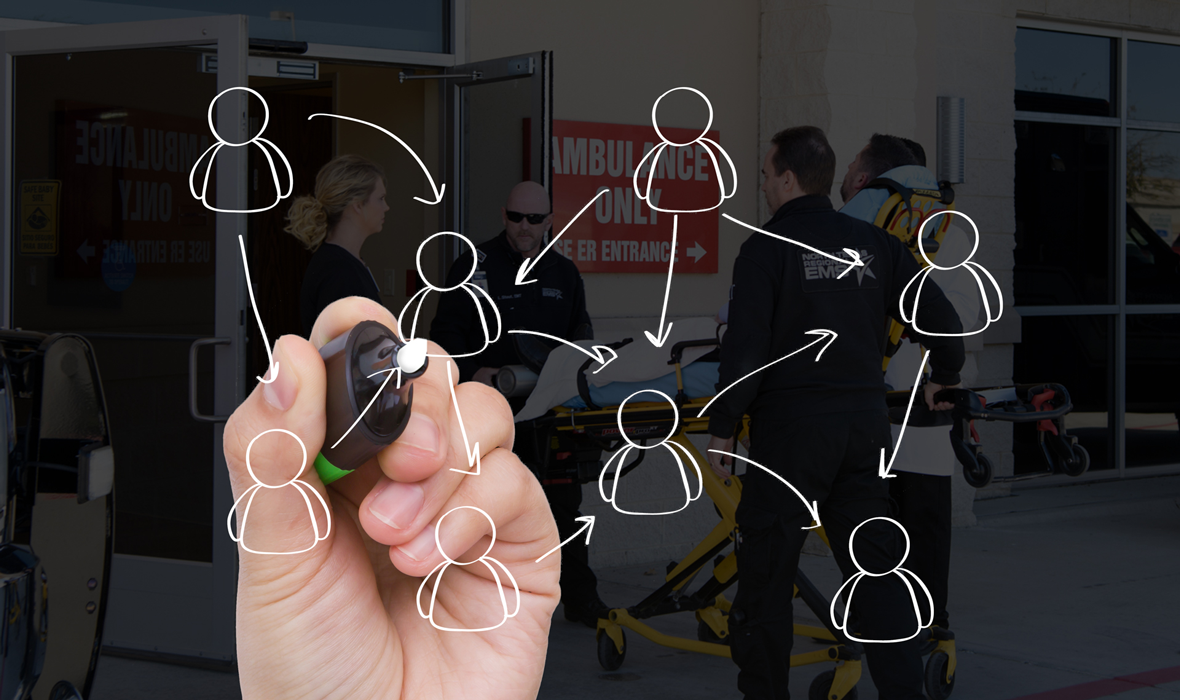Pulsara Around the World - 2025 Recap and January 2026
December Recap After an incredibly busy events year with 102 conferences, trade shows, and sponsorships, December was on the slower side for us, with...

My Grandfather (who was a very wise man) used to say “It’s a lot easier to pull a rope than push it.” Of course, as a kid I thought he had lost his mind. “Who would ever try to push a rope? It makes no sense!”
I was right, it makes no sense. Yet, we find ourselves everyday trying to push ideas, initiatives, and process changes on others, and then we just can’t figure out why our “great ideas” don’t get off the ground.
We see this frequently in healthcare. My background is in ED Nursing and EMS, and in my roles in these fields, we pushed each other daily in efforts to get THEM to do things the way WE want them done.
We also tended to push our patients along their care journey. EMS would drop patients at the ED with the goal of getting them off of the EMS stretcher as quickly as possible. The ED then did the exact same thing to the inpatient units, or to an outside facility in the case of a transfer. It was always “Here, take my patients and take them now!”
All clinicians have lived through these types of scenarios, but think about how much more efficient it would be (and how much happier our patients would be) if we pulled our patients through the system instead. It starts with EMS providing clear, accurate, timely information that the entire care team can access — WITHOUT EMS having to repeat the report three or four times (Psst … don’t have a way to do this yet? Pulsara can help).
Then, on the ED side, the team must be prepared with an assigned bed space (yep, could be in the hallway) and a clinician ready to receive that patient and pull them through to the next level of care. This thought process applies throughout the patient journey, including with inpatient units and specialty teams, and allows for a much more cohesive, team-oriented approach to patient care.
The summary is simple: pull — don’t push — patients through the system. Work with those who send AND receive your department’s patients to determine what steps would make this happen. I will say from experience, it all starts with communication.

December Recap After an incredibly busy events year with 102 conferences, trade shows, and sponsorships, December was on the slower side for us, with...

Editor's Note: In July 2025, EMS1 and Fitch & Associates released their annual EMS trend survey, What Paramedics Want, proudly sponsored by Pulsara....
![[PRESS RELEASE] Published Research Finds Up to 31% Faster STEMI Treatment Times in Rural Hospital Setting with Pulsara](https://www.pulsara.com/hubfs/_1_website-page-blog-assets/pulsara-hosp-teams-assign-cardio-stemi-rn-1200x701.jpg)
Published research shows how using Pulsara, alongside standardized field activation and a focus on stakeholder relationships, improves STEMI care and...